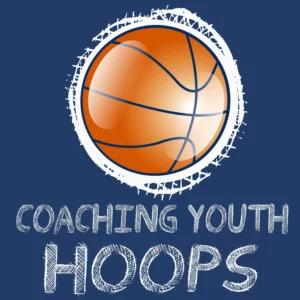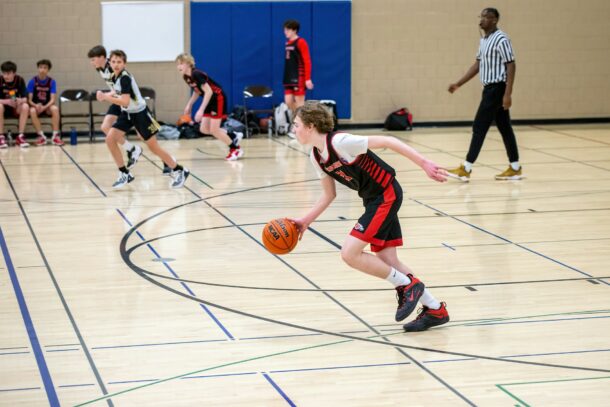Incorporating the right basketball drills for kids makes all the difference for coaches at the youth level. Coaches need to gauge the skill and talent they’re working with, instituting a practice plan to maximize the growth of these young players. Developing specific basketball skills early sets both the player and the team up for success, so picking the best basic passing drills for kids can be a good place to start.
Finding the right balance for your practice is key. You want your players to practice hard, hone their skills, and become better basketball players. But you also want them to have fun. Coaching at the youth level takes plenty of patience and positivity. You’ll need to incorporate a fast pace and keep your players occupied and engaged, especially during potentially monotonous skill development drills. Developing focus and fun at practice remains an integral effort for coaches at the youth level of the game.
While there’s no magic formula for practice planning or picking drills, leaning on your experience as a head coach often shows the right path for your players. Here’s a look a some of the best basic passing drills for kids.
Basic Passing Form
While most kids will want to start with shooting or dribbling drills, it’s important for every coach to incorporate basic passing drills early on in a player’s development. Coaches can’t assume kids will be good passers when first coming to the court. Bad passes destroy offensive possessions, while good passing creates scoring opportunities. Many turnovers come as a result of poor passes. So it’s integral that your young players learn the proper mechanics for bounce, chest, and outlet passes.
Coaches should demonstrate proper form for their players to mimic. For a basic chest pass, players should step into the pass and snap the ball off with their thumbs going through the ball and pointing toward their receiver. Chest passes are not overhead lobs. They should hit their receiver in the chest.
For the bounce pass, passers can start from the triple-threat position. The player should snap the ball off with their pass, but it should hit the court about three-fourths of the way toward the receiver. The resulting bounce from the pass should reach the receiver’s waist.
For overhead outlet passes, the players should be further apart. The passer snaps their pass off with some arc, but not so much that the ball floats to the receiver. The pass should be thrown hard and can lead the receiver down the court if need be.
Players catching the pass need to practice proper form as well. The receiver needs to provide a target with his hands extended to make the grab. After the catch, receivers should immediately turn into a triple-threat position.
Best Basic Passing Drills for Kids
After demonstrating the basic form for basic passing drills, it’s time to divide the players into groups to try their hand at these drills. Below are some of the best passing drills for kids just beginning in the game of basketball. It’s good for coaches to pair players for these drills so the kids can practice both passing and receiving.
-
Rapid Fire Chest Passing Practice
Players begin this drill with one ball and facing each other, about two feet apart. The first passer starts the drill by passing to his partner and immediately taking two short steps back. The receiver catches the ball and passes it right back. After each pass, the first player retreats two steps, while the receiver stands still. Once the first passer has made five passes, he starts moving back toward the receiver with each pass.
This drill should feature 10 passes total before switching players. Coaches can alter this drill by having both players retreat or return with each pass or having the players alternate with bounce passes. Be sure to stress to players the proper passing form, especially stepping into their passes as the distance grows. Players can practice this drill at home by using a wall.
-
Two-Ball Line Passing Drill
For this basic passing drill, three-to-five kids line up along the key arm-length apart with one passer facing the line. The passer has one ball and one of the players in the line does as well. The passer should set up on the opposite line of the key.
To start this drill, the passer snaps a chest pass to one random player in the line. The moment that happens, the player in the line holding the second ball passes back to the passer. The passer must catch and make a return pass to any receiver who does not have the ball. The passer slides along the key to catch and return passes as quickly as possible. Coaches should stress form once again as well as vision. The passer must keep his eyes up and react with each progression.
-
Man in the Middle
For this basic drill, coaches need to form passing groups of three kids each. Each trio uses one ball, with the passers facing each other anywhere from 10 to 20 feet apart. The third player in the group is the man in the middle. This player acts as a defender, trying to deflect or steal each pass as it’s made.
The two passers work together from a relatively stationary position, although a single dribble left or right is allowed to create a new passing angle. Coaches should stress triple-threat position and pivoting for the passers. Players can work on ball fakes to make the defender move. Passes in this drill can include chest, bounce, or overhead outlets. Tell players not to float passes that allow the defender to recover while the ball travels.
Related: Best Basketball Drills for Kids
Resources:
Coaching Youth Hoops Podcast Episodes
 5 Things I Wish I Had Known About Coaching Youth Hoops
5 Things I Wish I Had Known About Coaching Youth Hoops
The Skills Needed for K-2 Players
Thoughts on Running A Youth Basketball Camp
Basketball Skills for Grades 3-5
If you found this useful, don’t forget to check out additional blog posts at TeachHoops.com. Also, check out TeachHoops on Facebook, Twitter, Instagram and YouTube.






